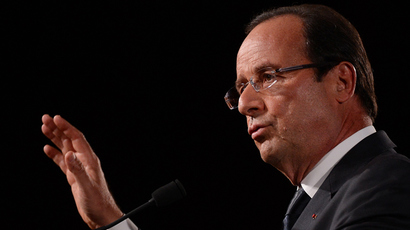What crisis? Billionaires’ fortunes doubled since 2009

Amidst a sea of lost jobs, slashed wages and austerity measures, the super-rich seem super-resistant, with their wealth doubling since the financial crisis, adding $226 billion to their wealth in the last year alone.
The Wealth X and UBS Billionaire Census 2013 makes for sobering
reading, in that it seems to confirm many peoples’ suspicions
that the financial crisis, while a nightmare for so many, has
actually been a windfall for the world’s richest.
To better grasp the vast wealth of the ultra-high net-worth
individuals (UHNW), their combined fortunes are now greater than
the GDP of any country aside from the United States and China,
and could fund the entire US budget deficit until 2024, according
to the report.
The combined fortune of the world's billionaires now stands at
$6.5 trillion, up from $3.1 trillion in 2009, according to the
Billionaire Census. On an interesting side note, the bulk of the
wealth of the world’s richest derives from the recently rescued
financial and banking sector (17 percent), with manufacturing
making up just 8 percent.
The United States leads the billionaire class with 515, for a
combined wealth of over $2 trillion dollars. China comes in a
distant second place with 157; followed by Germany at 148; the
United Kingdom at 135; and Russia with 108.
Of the 2,170 billionaires, 87 percent are male, while the four
‘mega-billionaires’, who each have a net worth of more than US$50
billion, are self-made individuals. These mega-billionaires are
Bill Gates, Carlos Slim, Amancio Ortega Gaona and Warren
Buffet.

Membership into the elite club of super-rich has surged 60
percent since 2009, with 810 new billionaires added during the
period, bringing the number to 2,170. But this seems to be just
the first stage of a growth spurt, as the report forecasts that
the number of billionaires will increase by 1,700 individuals to
nearly 3,900 by the year 2020.
The report also offers some surprises, especially in terms of
where the greatest amount of wealth generation is taking place.
Asia is “driving the tectonic shifts in wealth,” according
to the report, which reveals that wealth in Asia has
“increased by 13 percent, the fastest of any region.”
Asia, with China leading the drive, has also contributed the
largest number of additional billionaires (18) to the list this
year.
Europe, plagued as it is with economic uncertainty, was the only
region to suffer a decline in the number of billionaires.
Meanwhile, Latin America was the slowest growing region in terms
of wealth generation, increasing by just 2.3 percent.
“The vast expansion in the incomes of the super-rich comes
even as social services are being slashed in the US, Europe and
throughout the world,” the World Socialist Website railed.
“Earlier this month, food stamp benefits were reduced for the
first time in US history, and extended unemployment benefits are
scheduled to expire entirely at the end of the year.”
The combined net worth of the 515 billionaires in the United
States would be able to fund the food stamp and extended
unemployment benefit program for 100 years, it added.
Aside from examining the gravity-defying numbers, the census also
provides a peek into the personal extravagances of the
ultra-wealthy: “the most popular hobbies among billionaires;
how much of their wealth is invested in real estate and how many
houses they own on average; and how much of their fortunes is
spent on luxury holdings like yachts and private jets.”
As the report noted, “The average billionaire owns four homes,
with each one worth nearly US$20 million.”
With all these homes and properties in diverse locations around
the globe, the fabulously wealthy also require means of
transportation.
“Time and space are rarely boundaries for the world’s
billionaires, many of whom have a private jet or two, a super
yacht and other comfortable and speedy modes of transport,”
the census revealed.
It also provides a list the top 10 universities according to
their billionaire alumni, who have a mindboggling combined net
worth of $863 billion.
The report also noted “large disparities” between male and
female billionaires when it comes to their source of wealth.
Overall, 60 percent of the billionaires are considered self-made,
only 17 percent of female billionaires are included in this
category. Seventy-one percent of the females in the census
inherited their wealth, although the report predicts this trend
will change over time given the number of female entrepreneurs
entering the marketplace.
On a more personal level, the average billionaire has 2.1
children, while 15 percent of billionaires have four or more
children. At the same time, the report revealed there are several
billionaires with eight, nine, while one Middle Eastern
billionaire had a “staggering 24 children!”
The world’s super-rich are mostly huddled in the major financial
cities, such as New York City, which has 96 billionaires,
followed by Hong Kong with 75, Moscow with 74, and London with
67.
Robert Bridge, RT














